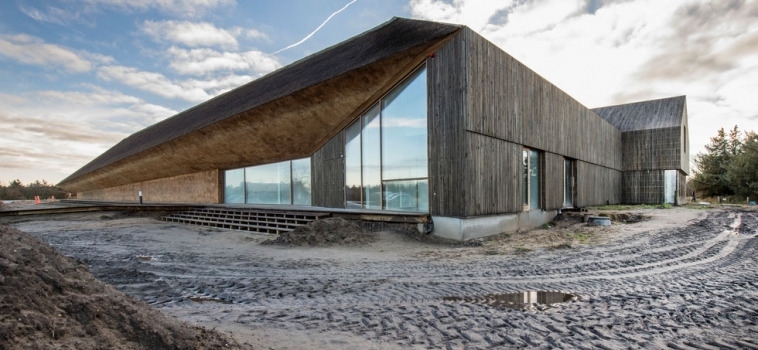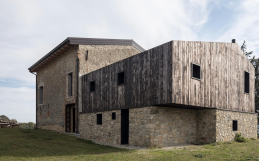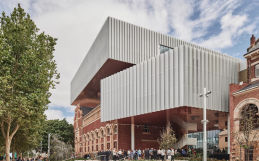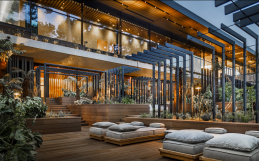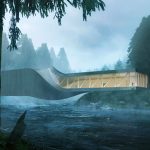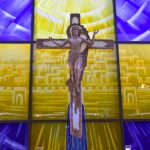Dorte Mandrup, based in Copenhagen, is the author of the project to expand the Danish Wadden Sea Centre on the Jutland peninsula in Ribe, one of Denmark’s oldest cities. The Wadden Sea Centre is the largest building consisting of intertidal sand and mud in the world.
It is realized with intricate interactions between physical and biological factors that have given rise to a multitude of transitional habitats. The building, which started in February 2017, is an interpretation of the local building tradition and the scheme of rural farmhouse in the area. Thatched roofs and facades emphasize the tactile qualities and robustness that can be found in traditional crafts and materials of the region. Architecture is sustainable, visionary and bold and makes the center a strongpoint for future educational information.
The center is home to numerous plant and animal species and is one of the last large-scale ecosystems where natural processes continue to function largely undisturbed. It is considered one of the most important areas for migratory birds in the world and is connected to a network of other key sites for local fauna.
It is important not only for its geographical location in the East Atlantic Flyway but also because it takes a critical role in the conservation of African-Eurasian migratory waterfowl. Up to 6.1 million birds can be present in Waddenzee at the same time and an average of 10-12 million birds pass each year.
Dorte Mandrup, con base a Copenaghen, è l’autrice del progetto di ampliamento del Danish Wadden Sea Centre, nella penisola dello Jutland, a Ribe, fra le più antiche città della Danimarca. Il Wadden Sea Centre è il più grande edificio composto da sabbia e fango intercotidale del mondo.
È realizzato con intricate interazioni tra fattori fisici e biologici che hanno dato origine a una moltitudine di habitat di transizione. L’edificio, iniziato nel febbraio 2017, è un’interpretazione della tradizione edilizia locale e della tipologia di casa colonica rurale di questi luoghi. Tetti e facciate di paglia sottolineano le qualità tattili e la robustezza che si possono trovare nell’artigianato tradizionale e nei materiali della regione. L’architettura è sostenibile, visionaria e audace e fa del centro un centro di informazione didattica del futuro.
Il centro ospita numerose specie vegetali e animali ed è uno degli ultimi ecosistemi su larga scala in cui i processi naturali continuano a funzionare in gran parte indisturbati. È considerata una delle aree più importanti per gli uccelli migratori nel mondo ed è collegata ad una rete di altri siti chiave per la fauna del luogo.
La sua importanza non è solo per la sua posizione geografia nella East Atlantic Flyway ma anche perché assume un ruolo critico nella conservazione degli uccelli acquatici migratori afro-euroasiatici. Nel Waddenzee possono essere presenti contemporaneamente fino a 6,1 milioni di uccelli e ogni anno passano in media 10-12 milioni di uccelli.
